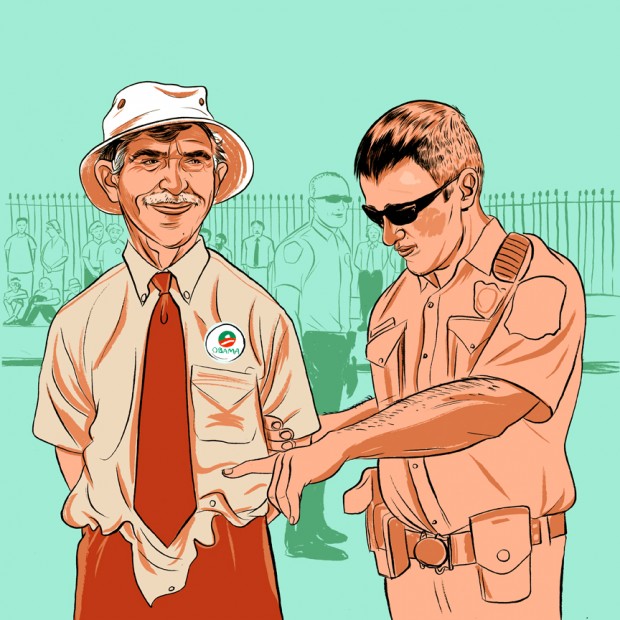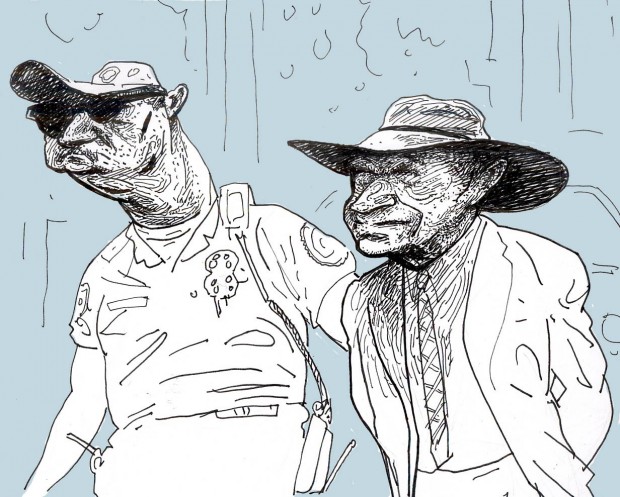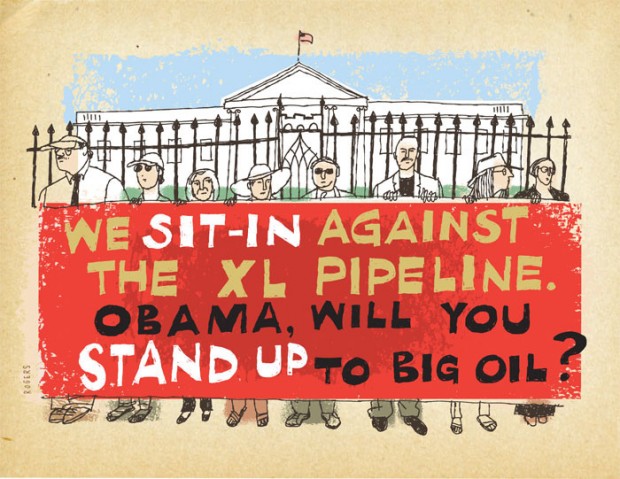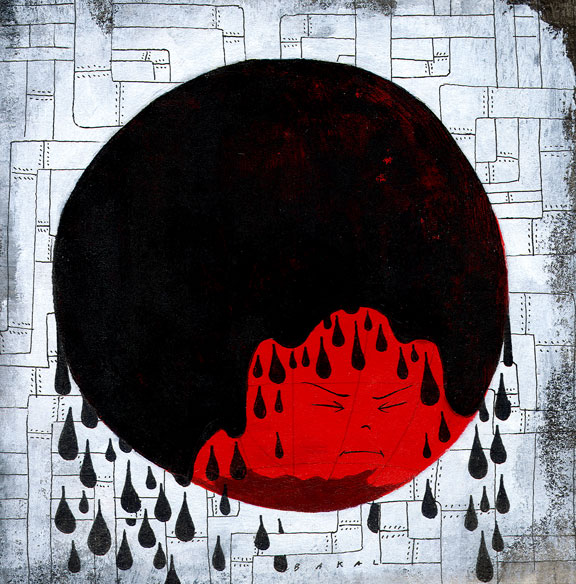Today’s art by Alex Fine:
Fashion Police?
Dr. James Hansen, of Columbia, Goddard and NASA, arrested Monday at the protest.
LATEST: OVER 700 ARRESTS AT THE WHITE HOUSE. UPDATES HERE.
Here’s what I think is a great art mosh, some artists creating our own anti-pipeline protest here online. Artists Paul Rogers and Scott Bakal have contributed to this blog with outstanding pieces. Please feel free to send in your own. Friend me at Facebook and post on my wall.Will move it here.
Here’s the scene outside the White House this month. A growing group of intrepid citizens have been calling President Obama’s attention to the need for him to kill the proposed Keystone XL pipeline which would run oil from tar sands from Alberta to Texas. This will be a horror in many ways. First, the planet cannot stand this toxic explosion of greenhouse gases when we should be mounting a Manhattan Project devoted to getting off of it. Second this will not be safe. Pipelines rupture. Just picture a BP spill overland in the US. If that’s the cost of doing business then we are in the wrong business. Obama can reject this all by himself. He promised to begin to heal the planet. Here’s his chance to act without the crippled Congress.
There is another reason to get involved here. In this season of political fantasy that absorbs our consciousness while serious issues go unattended (think Wisconsin, Tea Partiers, Debt Limit, Michelle Bachmann etc) here’s a chance to regain our voice. Let this kick off a new willingness to engage by people who understand issues and are not afraid to address them. Obama notwithstanding. Let us begin.
This is a great chance for art journalism in a good cause. Anyone who goes and wants to send art into this blog will have a friendly platform right here. If DC is not possible and you would still like to draw this story here’s a great Flickr page with photos.
Post all to my: FACEBOOK PAGE and I will post pieces here.
The NY Times:
This page opposes the building of a 1,700-mile pipeline called the Keystone XL, which would carry diluted bitumen — an acidic crude oil — from Canada’s Alberta tar sands to the Texas Gulf Coast. We have two main concerns: the risk of oil spills along the pipeline, which would traverse highly sensitive terrain, and the fact that the extraction of petroleum from the tar sands creates far more greenhouse emissions than conventional production does.
The Canadian government insists that it has found ways to reduce those emissions. But a new report from Canada’s environmental ministry shows how great the impact of the tar sands will be in the coming years, even with cleaner production methods.
It projects that Canada will double its current tar sands production over the next decade to more than 1.8 million barrels a day. That rate will mean cutting down some 740,000 acres of boreal forest — a natural carbon reservoir. Extracting oil from tar sands is also much more complicated than pumping conventional crude oil out of the ground. It requires steam-heating the sands to produce a petroleum slurry, then further dilution.
One result of this process, the ministry says, is that greenhouse gas emissions from the oil and gas sector as a whole will rise by nearly one-third from 2005 to 2020 — even as other sectors are reducing emissions. Canada still hopes to meet the overall target it agreed to at Copenhagen in 2009 — a 17 percent reduction from 2005 levels by 2020. If it falls short, as seems likely, tar sands extraction will bear much of the blame.
Canada’s government is committed to the tar sands business. (Alberta’s energy minister, Ronald Liepert, has declared, “I’m not interested in Kyoto-style policies.”) The United States can’t do much about that, but it can stop the Keystone XL pipeline.
The State Department will decide whether to approve or reject the pipeline by the end of the year. It has already delivered two flawed reports on the pipeline’s environmental impact. It should acknowledge the environmental risk of the pipeline and the larger damage caused by tar sands production and block the Keystone XL.









